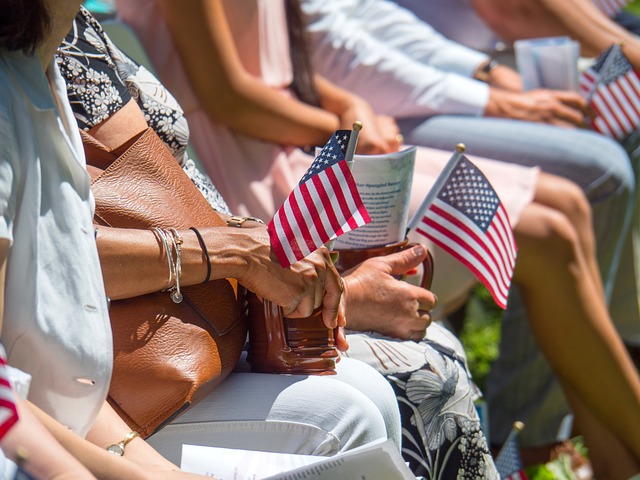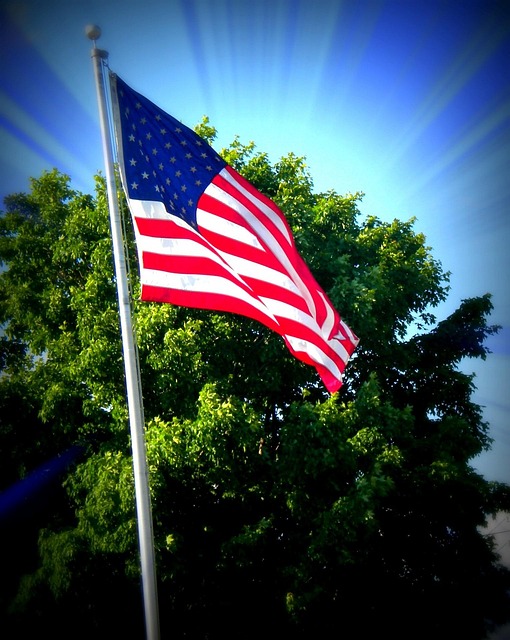Respectful handling and display of the American flag are key civic duties, reflecting national values and fostering patriotism. Specific guidelines govern its placement inside and outside buildings, as well as care, including folding and storage practices. Observing protocols during solemn occasions like half-staff flying ensures dignity for fallen heroes. Retiring damaged flags with respect via veteran organizations prevents disregard for this symbol. Education and community dialogue promote flag appreciation, enhancing civic responsibility and unity. "US flag near me open" resources guide citizens on proper usage and preservation of this powerful national emblem.
“Discover the profound rules and protocols surrounding the proper respect and use of the American Flag, a symbol of freedom and unity. From understanding its significance to learning how to display it indoors and outdoors, this guide covers essential etiquette. We’ll explore best practices for handling, storage, and disposal, as well as key circumstances like flying at half-staff. Additionally, learn how to educate your community about these important customs, promoting respect for our nation’s iconic symbol, regardless of where you’re located near me.”
- Understanding the Significance of Flag Etiquette
- Displaying the Flag Properly: Inside Buildings and Outdoors
- Respectful Handling and Storage of the American Flag
- Flying the Flag at Half-Staff: Protocols and Circumstances
- When and How to Dispose of a Damaged or Worn Flag
- Educating Others: Promoting Flag Respect in Your Community
Understanding the Significance of Flag Etiquette

The proper respect and use of flags are essential aspects of civic responsibility, especially in a nation where the flag serves as a symbol of unity, pride, and shared history. Understanding flag etiquette is not merely about following rules; it’s a way to honor the values and principles that the flag represents. When you spot an American flag near you open, take a moment to appreciate its significance. It’s more than just a piece of fabric; it’s a beacon of freedom, democracy, and the diverse tapestry of cultures that make up the United States.
Respecting flag etiquette ensures that this powerful symbol remains intact and is seen as a mark of honor rather than disrespect. It teaches citizens about their rights and responsibilities as members of a community and a nation. From how to display a flag properly on special occasions to understanding when and where it’s appropriate to fly it, these rules are designed to foster a culture of respect and patriotism.
Displaying the Flag Properly: Inside Buildings and Outdoors

When displaying the U.S. Flag, whether inside a building or outdoors, it’s crucial to follow specific guidelines to show respect and honor its significance. Inside buildings, the flag should be hung vertically and securely fastened at all times. It should not touch the ground, and any fringe or cord should be in a natural position, not draped. The flag is best positioned near an entrance, window, or door, where it can be seen and respected by those entering the space.
Outdoors, proper display involves similar principles. When flown on a pole, the flag should be at the center, above all other objects, and at a height that allows it to be easily viewed. For permanent outdoor displays, consider using a weather-resistant mount or housing to protect the flag from environmental damage. Always ensure the flag is clean and in good condition before raising it, and perform regular checks to maintain its respectability. Remember, these guidelines for proper display reflect the value placed on our national symbol, encouraging all to show the same reverence when they see the U.S. Flag near them, open or flying high.
Respectful Handling and Storage of the American Flag

When handling the American Flag, it’s crucial to approach it with utmost respect and care. The US Flag, often referred to as “the Stars and Stripes,” is a symbol of freedom, bravery, and national pride. Always treat it gently, avoiding any actions that could cause damage or soiling. Whether you’re displaying it indoors or outdoors, ensure it remains clean and in good condition. Proper storage is equally important; when not displayed, the flag should be folded neatly and stored in a cool, dry place away from direct sunlight and moisture.
Consider visiting a local historical society or museum (“US flag near me open”) to learn more about the appropriate handling and care of flags. These institutions often offer guidelines and demonstrations on how to correctly fold and store a flag, ensuring its dignity and integrity are preserved for future generations. Remember, respectful handling and storage contribute to maintaining the flag’s symbolic value and the values it represents.
Flying the Flag at Half-Staff: Protocols and Circumstances

When flying the US flag, certain protocols should be followed, especially during solemn or memorial occasions. One significant display is when the flag is flown at half-staff, signifying respect and mourning. This practice is not limited to federal buildings but can also be seen at homes, schools, and other public spaces as a sign of solidarity during national periods of sorrow.
To fly the flag at half-staff, follow these guidelines: ensure the flag is properly mounted on a staff and located in an open area where it’s visible to the public (a US flag near me scenario). The flag should be raised to the top of the staff before being lowered to half-staff. It’s traditionally done at dawn on the day of observance and remains at half-staff until sunset, after which it is raised back to its full height. This protocol respects the memory of those who have passed, ensuring their legacy is acknowledged with dignity and honor.
When and How to Dispose of a Damaged or Worn Flag

If a U.S. flag becomes damaged or worn beyond repair, it’s important to dispose of it properly as a sign of respect. No specific guidelines dictate when a flag should be retired, but generally, flags showing significant wear or damage should no longer be used. Look for frayed edges, faded colors, or tears that compromise the integrity of the fabric.
When ready to dispose of a damaged flag, do not simply throw it away. Instead, contact your local American Legion post, VFW (Veterans of Foreign Wars) hall, or other recognized veteran organization. These groups often have programs in place to collect and properly dispose of retired flags, ensuring they are respectfully burned or buried according to established protocols. They can also provide guidance on where to obtain replacement flags at a “Us flag near me open” location if needed.
Educating Others: Promoting Flag Respect in Your Community

Promoting flag respect starts with education and open dialogue in your community. Encourage local schools, clubs, and organizations to include lessons on flag etiquette in their curricula. Hosting workshops or seminars where you can discuss the history, symbolism, and proper use of the US flag can help foster a deeper understanding among residents. By engaging in these activities, you’re not only teaching others about the significance of the flag but also fostering a sense of civic responsibility.
Additionally, consider reaching out to local businesses and public spaces near you to ensure they adhere to proper flag display guidelines. Many communities have specific rules regarding the placement and condition of flags on public property. By being proactive in these efforts, you contribute to creating an environment where everyone appreciates and respects the US flag, making it a true symbol of unity and pride for your community.
